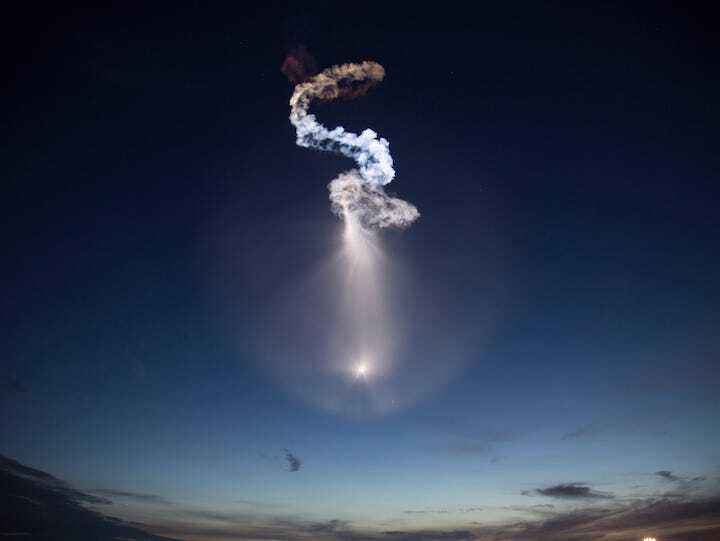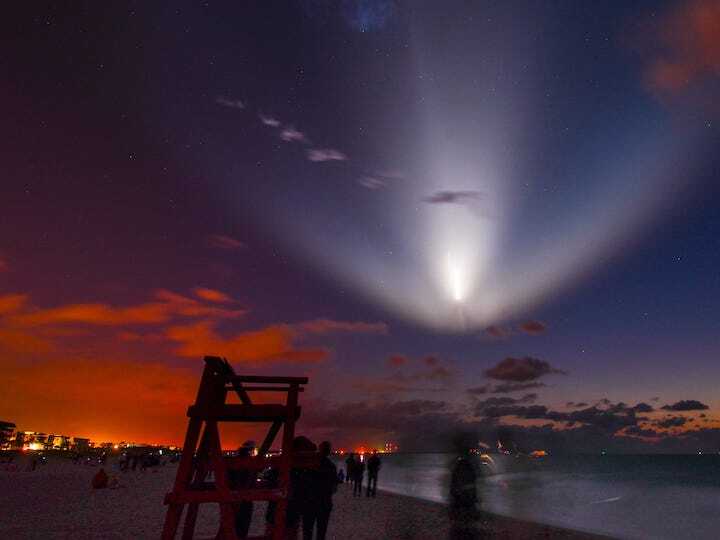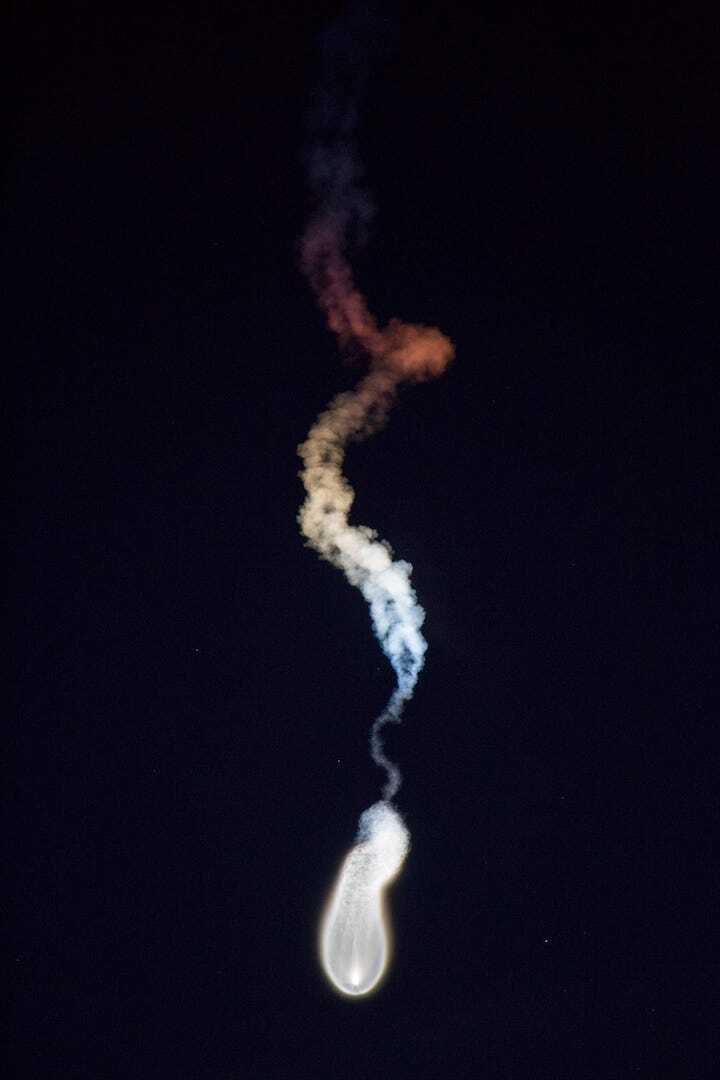3.12.2021
Weather conditions look good for the next launch of a SpaceX Falcon 9 rocket. But it's not just the rumble of a rocket launch that some people will be waiting for when dozens of Starlink internet satellites take flight from Cape Canaveral Space Force Station's Launch Complex 40 this week.
Some people will be looking for a phenomenon known as 'space jellyfish'.
"These are my favorite," said Jessica Jensen, SpaceX's director of Dragon mission management, during a post-2018 launch conference at Kennedy Space Center. "These pre-sunrise or post-sunset launches give for a spectacular show in the sky."

So what causes the incredible light show in the sky? It's when the rocket's exhaust plume meets with the sunlight just after liftoff. But the conditions have to be just right for the 'jellyfish effect' to happen.
In plain English, what happens during twilight launches, Jensen said, is that despite it being dark outside from the spectator's point of view, the sun illuminates the rocket's exhaust plume as it goes into space. As the plume condenses in the cold and the rocket gains altitude, it appears to change colors and it appears like a blazing torch before gradually transitioning to a soft white.

It all makes for a spectacular display in the sky. And unlike the roar and rumble heard during liftoff, witnessing the illuminated plume stands in stark contrast with what viewers felt just seconds ago – it's mostly quiet by the time the phenomenon takes hold.

This SpaceX Falcon 9 launch marks the 32nd for SpaceX's Starlink internet constellation, which already has roughly 1,700 operational satellites in low-Earth orbit. The company recently said more than 100,000 customers have signed on to receive their user terminals and internet connection packages, which initially cost $499 for hardware and $99 a month thereafter.
Spectators curious about Falcon 9's flightpath should note that the rocket will angle toward a northeastern bias after liftoff.
Quelle: Florida Today

